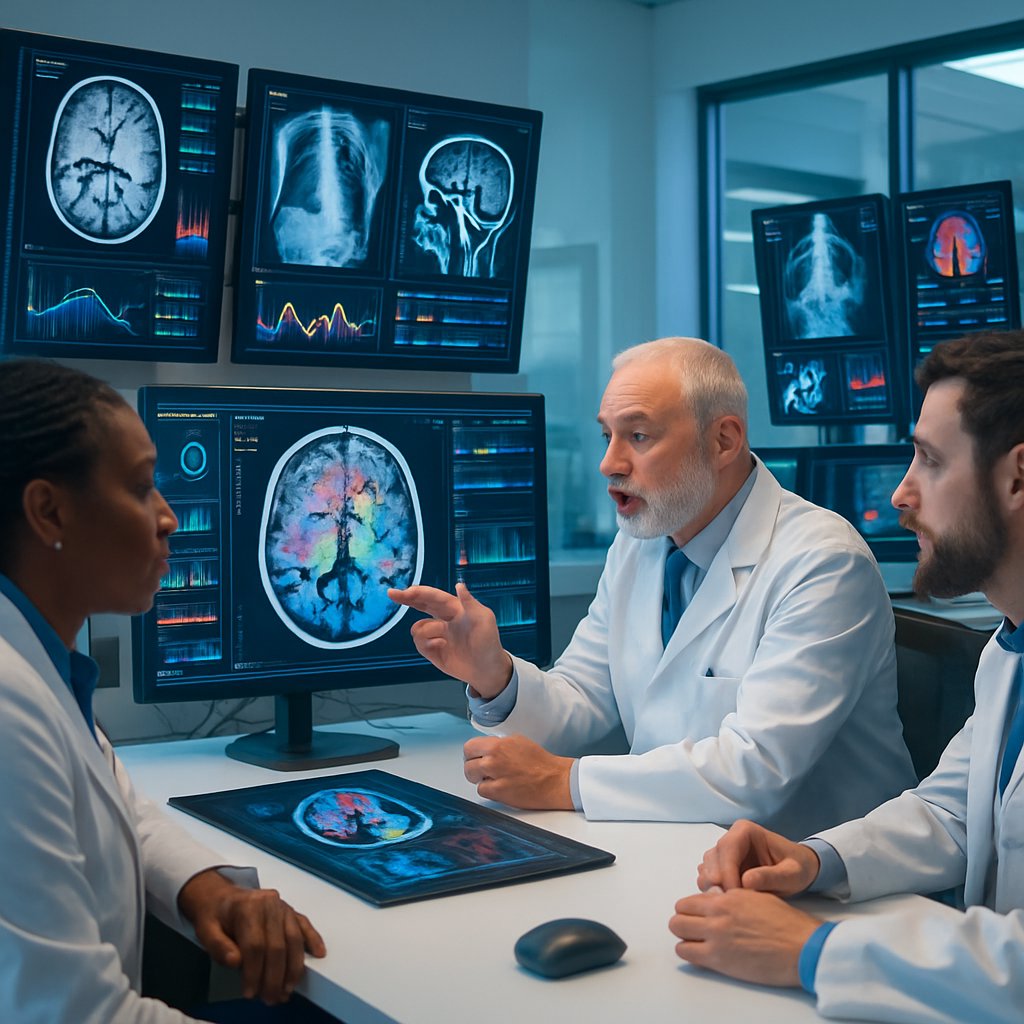Revolutionizing Radiology: How AI is Changing Medical Report Generation
In a world where technology seems to be at the forefront of everything we do, the medical field is no exception. Have you ever thought about how radiology reports are generated? These invaluable documents, which help doctors diagnose diseases and plan treatments, are often created through painstaking manual processes. But thanks to a fascinating study by Ahmed T. Elboardy, Ghada Khoriba, and Essam A. Rashed, the future looks very promising. Their research introduces a multi-agent framework for generating and evaluating radiology reports using advanced artificial intelligence. Let’s dive into how this works and why it's so important in modern medicine!
Why This Research Matters
The implementation of Large Language Models (LLMs) and Large Vision Models (LVMs) provides exciting opportunities for automating the radiology report generation process. However, with great technology comes great responsibility! There's a need for systems that are not just automated but also clinically reliable and accurate. While the potential is immense, the challenges are equally significant, particularly when it comes to evaluation protocols and consistency.
This is where the innovative multi-agent framework comes into play. Think of it as a well-orchestrated symphony, where each musician (or agent) has a specific role to play to produce harmonious and accurate reports. This research aims to fill the gaps in automated systems while streamlining workflows and enhancing the trustworthiness of AI in radiology.
The Basics of the Multi-Agent Framework
What is a Multi-Agent System?
Imagine a group of specialists in a room, each with a unique expertise, collaborating to tackle a complex task. That’s the essence of a multi-agent system (MAS). In this study, the authors have crafted ten specialized agents, each tasked with a specific role in the radiology report generation process.
Here's a quick breakdown of these agents:
- Anatomical Region Detection Agent: Identifies anatomical regions within medical images.
- Modality Classifier: Determines the type of imaging modality being used (like MRI, CT, etc.).
- Modality Interpreters: Specialized agents for different organ-related modalities to extract clinical features.
- Clinical Context Processor: Uses patient metadata and clinical history for context in reporting.
- Quantitative Segmentation Agent: Provides precise measurements of abnormalities (think tumor sizes).
- Diagnostic Classifier: Generates preliminary diagnostic assessments.
- Clinical Report Composer: This core LLM agent writes the actual report in a format that doctors can use.
- Quality Assurance Agent: Serves as a quality control measure, reviewing outputs to ensure accuracy.
- Evaluation Agent: Acts as a judge, benchmarking overall performance.
- Orchestrator: The conductor of the whole operation, keeping everything in sync.
How It Works
In reality, the framework operates like a well-oiled machine. Each agent interacts within an established architecture, ensuring efficient information flow and accountability. The orchestrator keeps everything in check, deciding which agent to call upon next, while performance metrics assess the success of individual agents and the whole system.
Real-World Testing
To put this innovative framework to the test, the researchers curated a benchmark dataset of brain MRI scans from cancer patients, annotated by certified radiologists. By applying their multi-agent framework to this dataset, they successfully demonstrated how generative AI could produce clinically relevant and accurate radiology reports.
Key Advantages of This AI Framework
Improving Report Generation Efficiency
By automating the generation of radiology reports, this framework can significantly reduce the time radiologists spend writing them. Fewer hours spent on paperwork means more time for patient care and diagnosis, allowing for better outcomes and efficiency within healthcare systems.
Enhancing Accuracy and Consistency
With specialized agents, each focusing on distinct elements of image analysis and report generation, the framework promises higher accuracy compared to traditional manual approaches. Each component is rigorously evaluated, ensuring that the final reports are not only coherent but also reflective of clinical realities.
Supporting Human Expertise
One might wonder, will AI replace radiologists? Not at all! This framework is designed to complement and support the work of radiologists rather than replace them. The human-in-the-loop approach ensures that expert clinical judgment anchors the evaluations, merging AI efficiency with human expertise for the best outcomes.
Conclusion: The Future Looks Bright
This multi-agent framework brings a revolutionary approach to automating radiology report creation. More importantly, it enhances reliability and accountability, ensuring that AI assists healthcare practitioners in crucial ways.
The implications of this research extend far beyond the confines of radiology. As AI technologies continue to evolve, they have the potential to transform many areas of medicine, creating more efficient, accurate, and patient-centered care.
Key Takeaways
- Multi-Agent Framework: This system operates like a team of specialists, each with a unique role, to generate radiology reports efficiently and accurately.
- Efficiency & Accuracy: By automating the process, this framework can save time while ensuring high-quality reports that reflect clinical realities.
- Support for Radiologists: Rather than replace human expertise, the framework enhances it, allowing doctors to focus on patient care.
- Future of AI in Healthcare: The implications of this research are broad, highlighting the transformative potential of AI in medicine beyond just radiology.
This potent combination of AI efficiency and human expertise paves the way for safer, smarter healthcare. So, if you ever find yourself wondering how AI might shape the future of your own health experiences, remember this exciting road we're on!

